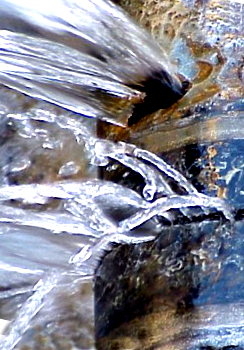Slow response to dangerous lead levels in Tas
 A new study into lead contamination in Tasmanian drinking water has revealed high levels of lead coming from a surprising source.
A new study into lead contamination in Tasmanian drinking water has revealed high levels of lead coming from a surprising source.
Researchers found dilapidated drinking water infrastructure including lead jointed pipelines, old PVC pipes, and household plumbing were behind the high lead levels, which were well above the Australian Drinking Water Guideline of 10 µg/L.
Some test showed lead levels of 540µg/L.
The Macquarie University study looked at the drinking water infrastructure in the North-East Tasmanian region.
In the town of Pioneer, residents have known for decades that the local water supply is contaminated, and since 2012 residents have been unable to drink the water because of lead and e-coli concerns.
TasWater says that while it has been managing the water supply systems in line with national drinking water guidelines, it will also spend $10.5 million on a new treated water system for several north-east towns.
Reports say these efforts have so far consisted of building eight rainwater tanks as an alternative to town water.
The Macquarie study used advanced lead isotopic compositions and other techniques to differentiate previously unknown sources of ongoing lead contamination in Pioneer and Ringarooma.
“Water lead isotopic compositions from across the catchment are markedly different from the local bedrock, indicating that the contamination is not naturally occurring,” said lead author Paul Harvey.
“The study results show that the drinking water is being inadvertently contaminated by aging infrastructure, and is a public health issue that warrants immediate intervention to limit the burden of disease from lead exposure.”
International research has revealed that renal damage, anaemia and neuropathy are among the possible health effects of human lead toxicity.
As part of his ongoing PhD research, Harvey has identified similar results in the surrounding towns of the Ringarooma River catchment area, suggesting that the problem may be more widespread throughout broader Tasmania.
The prevalence of lead contamination of Australian drinking water supplies is relatively unknown, with only a small number of studies available, many of which focus on rain water tanks as a supply source.
“Solutions to this problem are likely to involve the refurbishment of the infrastructure in one way or another, whether it be replacing or lining the pipes,” said Harvey.
“Regardless, the study illustrates the need for further consideration of the understudied problem of water lead contamination.”
The research was presented to residents of Pioneer at public meetings this week, leading some to suggest they now had the facts to present to TasWater and demand a change.








 Print
Print